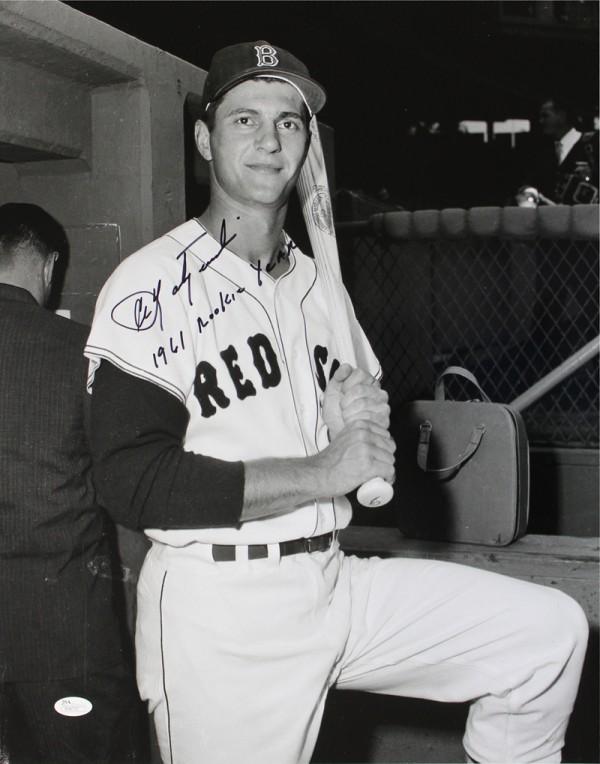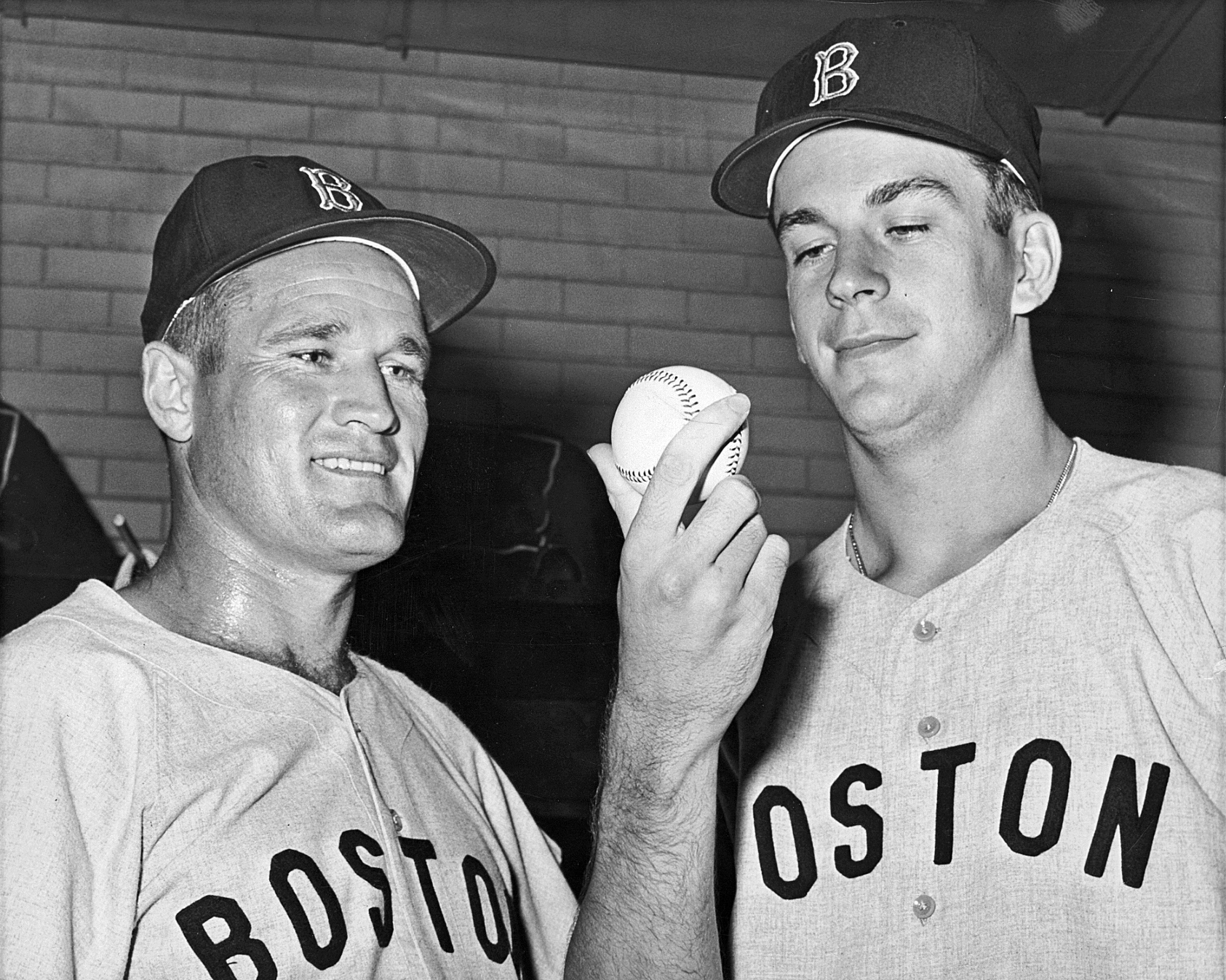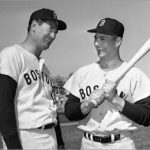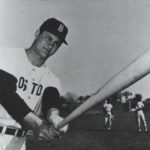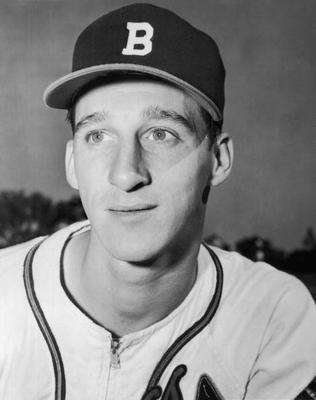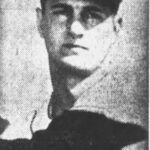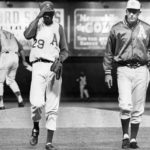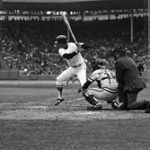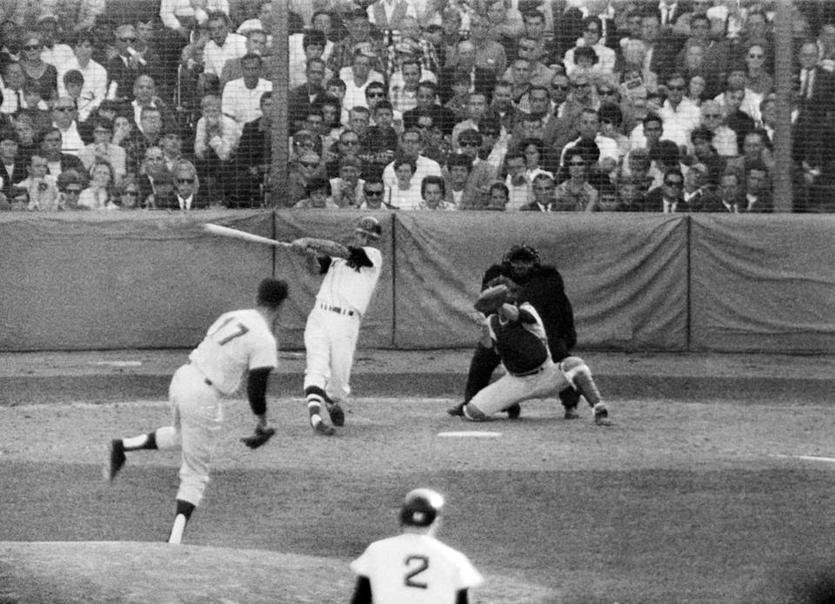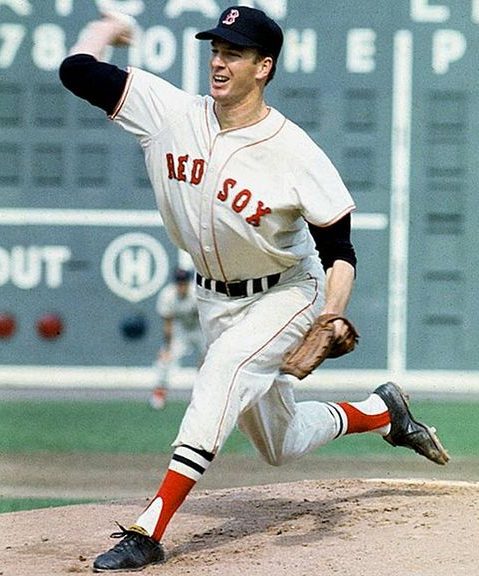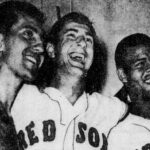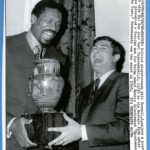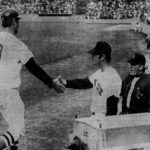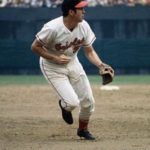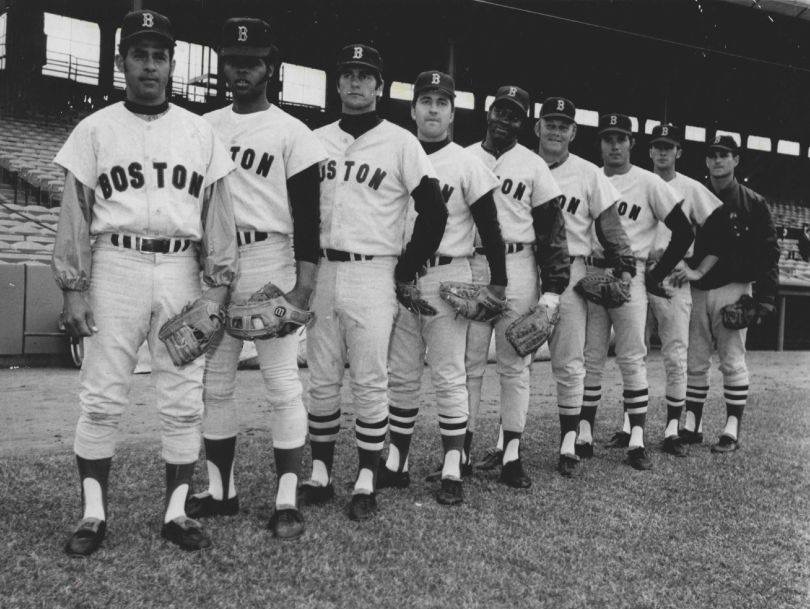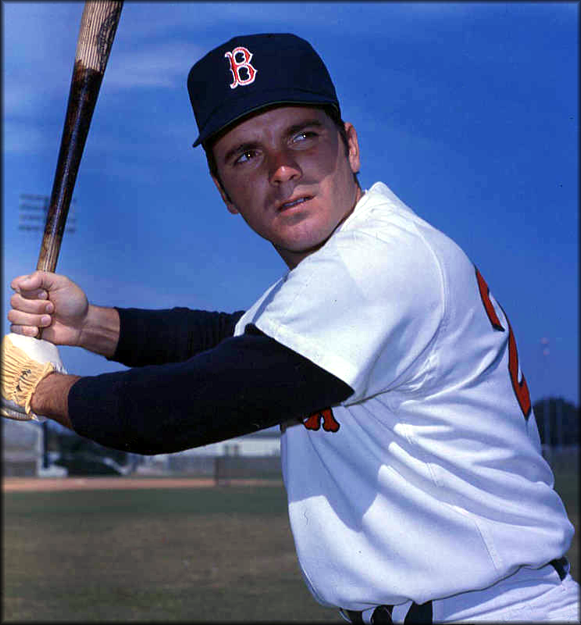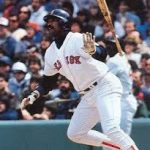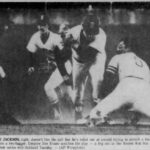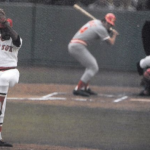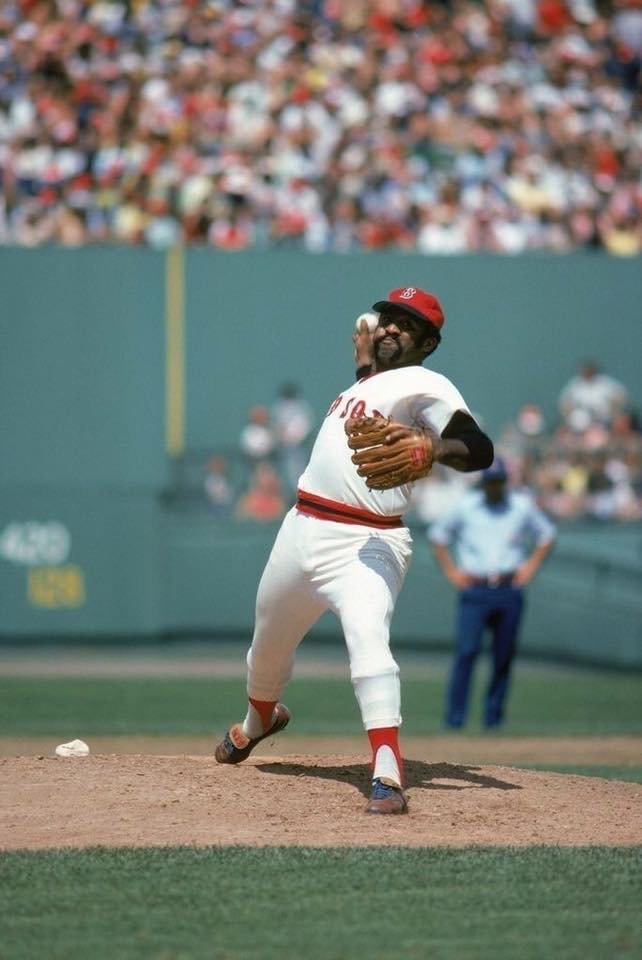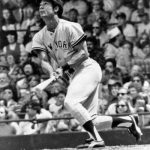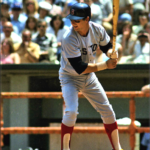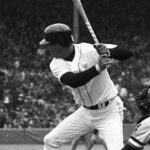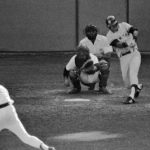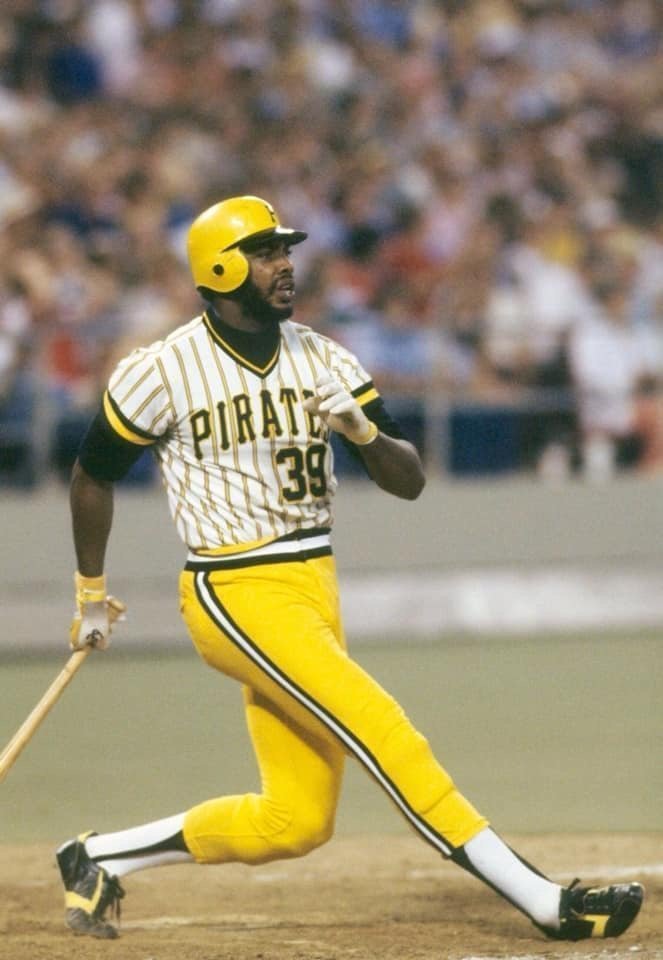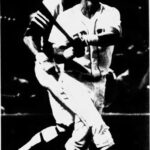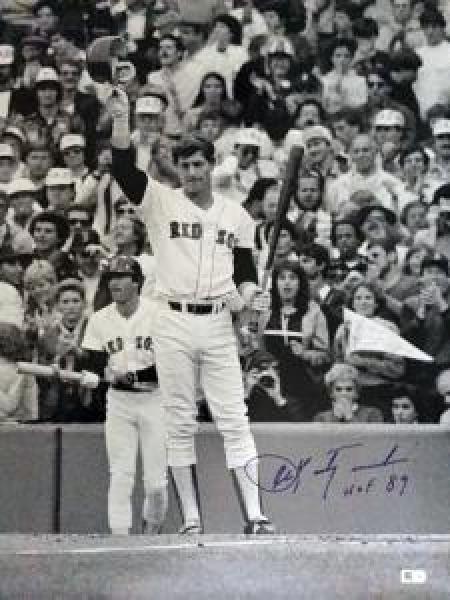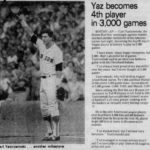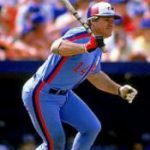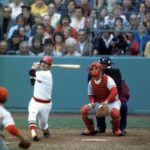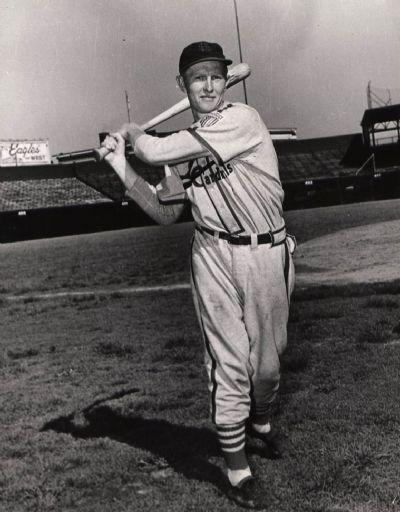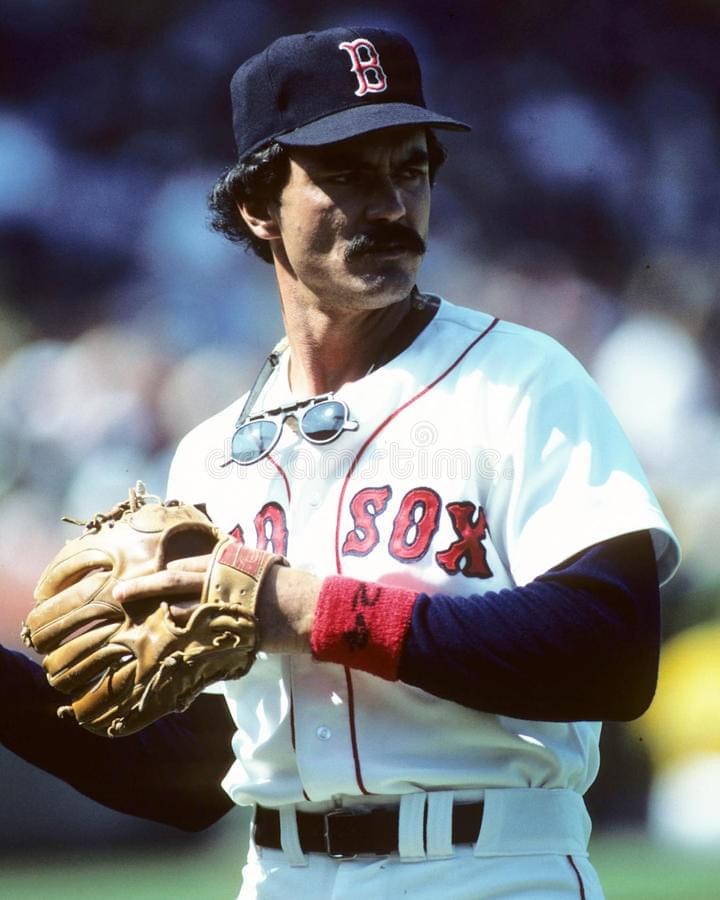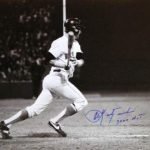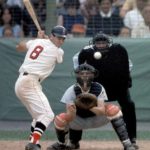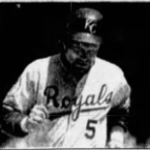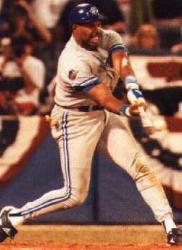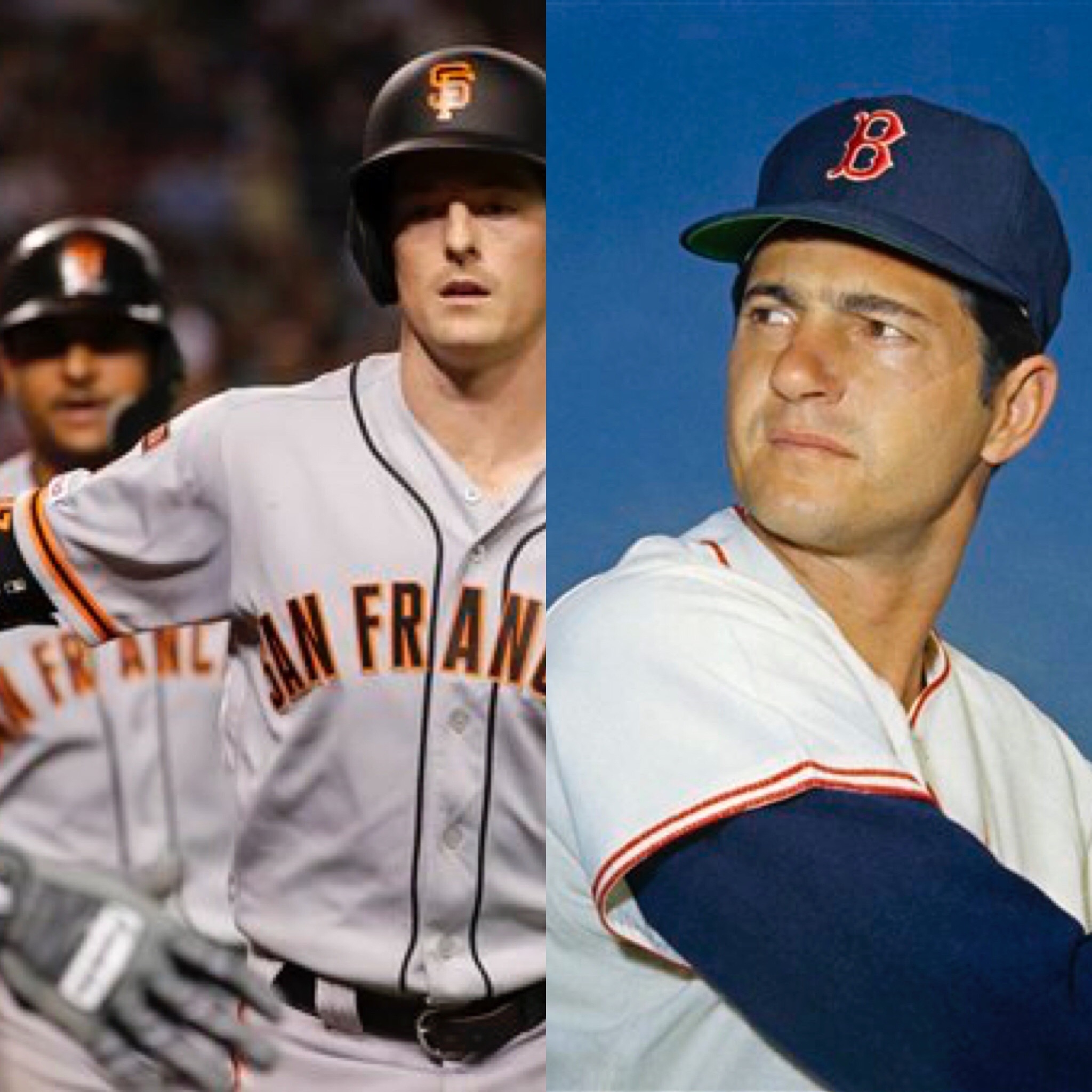Carl Yastrzemski Stats & Facts
Carl Yastrzemski Essentials
Positions: Outfield, First base
Bats: Left Throws: Right
Height: 5′-11″ Weight: 175
Born: August 22, 1939 in Southampton, NY USA
High School: Bridgehampton HS (Bridgehampton, NY)
Schools: Merrimack College (North Andover, MA), University of Notre Dame (South Bend, IN)
Debut: April 11, 1961 vs. KCA 5 AB, 1 H, 0 HR, 0 RBI, 0 SB
Last Game: 10/2/1983 vs. CLE 3 AB, 1 H, 0 HR, 0 RBI, 0 SB
Hall of Fame: Inducted as a Player in 1989 by BBWAA 423/447 ballots)
View Carl Yastrzemski’s Page at the Baseball Hall of Fame (plaque, photos, videos).
Full Name: Carl Michael Yastrzemski
Nicknames: Yaz
Pronunciation: \yuh-STREM-skee\
View Player Bio from the SABR BioProject
Nine Players Who Debuted in 1961
Carl Yastrzemski
Lou Brock
Boog Powell
Jim Fregosi
Sam McDowell
Dean Chance
Al Downing
Bill Freehan
Eddie Brinkman
All-Time Teammate Team
Coming Soon
Notable Events and Chronology for Carl Yastrzemski Career
Intro
Following a legend is never easy. That is something Carl Yastrzemski discovered after he inherited the Boston Red Sox left field job from Ted Williams at the start of the 1961 season. Yastrzemski played well for Boston his first six years in the American League, winning a batting title and being named to three All-Star teams. Nevertheless, his inability to perform at the same lofty level that Williams reached during his remarkable career often left Yastrzemski feeling frustrated, dejected and reviled. Frequently booed by the Fenway faithful, the young outfielder led a rather turbulent existence his first few years in Boston. It wasn’t until 1967 when Yastrzemski captured the American League triple crown and put together one of the finest all-around seasons in league history, that he was fully accepted by the fans in Boston. From that point on, Yaz reached a level of popularity in Beantown that few other athletes have ever approached.
Biography
Born on August 22, 1939, in Southhampton, Long Island, Carl Michael Yastrzemski grew up on his father’s potato farm in the small Long Island town of Bridgehampton. As a youngster, Carl played on sandlot baseball teams with his father, Carl Sr., who the younger Yastrzemski always maintained was superior to him as a ballplayer. After starring in baseball, football, and basketball at Bridgehampton High School, Carl Jr. briefly attended Notre Dame University before leaving school to pursue a professional career in baseball. Courted by several major league teams, Yastrzemski eventually signed with the Boston Red Sox, who immediately assigned him to Raleigh of the Carolina League. Yastrzemski captured the league’s batting title in 1959 with a mark of .377, before being promoted to Boston’s Triple-A affiliate in Minneapolis the following year. After falling just short of winning his second consecutive batting championship in 1960, Yastrzemski joined the Red Sox for the start of the 1961 campaign.
Yastrzemski placed an immense amount of pressure on himself when he arrived in Boston at the start of the season. The 22-year-old outfielder not only wished to live up to the high expectations his father had set for him, but he also felt compelled to perform exceptionally well since he was considered to be the heir apparent to the recently retired Ted Williams in left field for the Red Sox. Never having failed at any level before, Yastrzemski had a difficult time coping with the initial lack of success he experienced against major league pitching. He later recalled, “I remember I was a scared rookie, hitting .220 after the first three months of my baseball season, and doubting my ability.”
Yastrzemski’s struggles were such that the Red Sox even called in Williams at one point to work with the slumping youngster. The Splendid Splinter helped to restore the rookie’s shattered confidence, telling him at their first meeting, “I know – I know all about you. Look, kid, don’t ever – ya’ understand me? – don’t ever let anyone monkey with your swing.”
Williams’ positive reinforcement helped Yastrzemski right himself, and the young left fielder went on to post respectable numbers in his first big-league season, finishing the campaign with 11 home runs, 80 runs batted in, and a .266 batting average. Yaz improved upon those figures in 1962, hitting 19 home runs, driving in 94 runs, scoring 99 others, batting .296, and finishing second in the league with 43 doubles. He won his first batting title the following year, leading the American League with a mark of .321, and also topping the circuit with 183 hits, 40 doubles, 95 walks, and a .418 on-base percentage. Yastrzemski earned his first nomination to the All-Star team, won his first Gold Glove, and placed sixth in the league MVP voting at season’s end.
Yastrzemski continued to play well for the Red Sox in each of the next three seasons, finishing among the league leaders in batting average, doubles, and on-base percentage all three years, earning two more selections to the All-Star team, and winning another Gold Glove. In fact, Yaz developed into one of the American League’s finest all-around players, possessing good power and a keen batting eye at the plate, and learning to play Fenway’s Green Monster in left field to perfection. Nevertheless, the outfielder often found himself the target of verbal taunts from the fans at Fenway. Yastrzemski had yet to reach the heights that were originally predicted for him when he first entered the league, and he further exacerbated his situation by occasionally demonstrating a lack of total concentration on the field. Yaz made errors in judgment on the basepaths from time to time, and he often displayed his frustrations over his own failures at the plate by failing to run out fly balls or infield groundouts. The Boston fans might have treated Yastrzemski better, though, had they realized that it was the outfielder’s love and passion for the game that caused these periodic lapses.
Yastrzemski once said, “I think about baseball when I wake up in the morning. I think about it all day, and I dream about it at night. The only time I don’t think about it is when I’m playing it.”
Boston outfielder Joe Lahoud confirmed Yaz’s obsession with the sport when he revealed, “Yaz did it all the time. We’d be on the road and he’d call, ‘C’mon, we’re going to the ballpark.’ I’d say, ‘Christ, it’s only one o’clock. The game’s at seven.’ He lived, breathed, ate, and slept baseball. If he went 0-for-4, he couldn’t live with it. He could live with himself if he went 1-for-3. He was happy if he went 2-for-4. That’s the way the man suffered.”
Yastrzemski finally won over the Fenway faithful in 1967 when he led the Red Sox to the American League pennant by putting together a truly remarkable season. After working out feverishly during the offseason and adding between five and ten pounds of muscle to his frame, the 5’11” Yastrzemski reported to spring training in the best shape of his life, at close to 185 pounds. Always a ferocious swinger, Yaz’s bat appeared just a bit quicker, and he began pulling the ball more regularly, instead of driving it to all fields as he had done in previous years. The change in Yastrzemski’s hitting style paid huge dividends, as the outfielder captured the league’s triple crown by topping the circuit with 44 home runs, 121 runs batted in, and a .326 batting average. He also finished first with 112 runs scored, 189 hits, 360 total bases, a .418 on-base percentage, and a .622 slugging percentage. In a hotly-contested four-team race, Yastrzemski carried the Red Sox on his back down the stretch, batting .513, hitting five home runs, and knocking in 16 runs over the season’s final two weeks, to enable Boston to finish just one game ahead of Detroit and Minnesota in the final standings. Yaz then continued his extraordinary performance against St. Louis in the World Series. Although the Red Sox eventually fell to the Cardinals in seven games, Yastrzemski batted .400, with three homers and five runs batted in. At season’s end, Yaz was named A.L. MVP, Sports Illustrated magazine’s Sportsman of the Year, and the winner of the Hickok Belt as the top professional athlete of the year.
Although the 1967 season proved to be the finest of Yastrzemski’s career, the outfielder remained one of baseball’s very best players from 1968 to 1970. He followed up his greatest year by hitting 23 home runs, driving in 74 runs, scoring 90 others, and leading the league with a .301 batting average and a .426 on-base percentage in 1968. Yaz batted only .255 the following year, but he hit 40 homers, knocked in 111 runs, scored 96 others, and won his fifth Gold Glove. Yaz had a sensational 1970 campaign, placing among the league leaders with 40 home runs, 102 runs batted in, and a .329 batting average, and topping the circuit with 125 runs scored, a .452 on-base percentage,
and a .592 slugging percentage. He finished fourth in the league MVP voting.
Yastrzemski never again posted huge offensive numbers, but he remained an extremely productive hitter until he finally retired at the conclusion of the 1983 campaign, at the age of 44. Although Yaz hit a total of only 75 home runs between 1971 and 1975, he consistently finished among the American League leaders in on-base percentage, and he topped the circuit with 93 runs scored in 1974. He had his last big year in 1977, batting .296, hitting 28 homers, driving in 102 runs, scoring 99 others, and winning the last of his seven Gold Gloves for his outstanding play in left field. Yaz spent his final six seasons splitting time between the outfield, first base, and DH spots. He retired at the conclusion of the 1983 campaign with 452 home runs, 1,844 runs batted in, 1,816 runs scored, 3,419 hits, a .285 batting average, and an outstanding .379 on-base percentage. Yaz also accumulated 646 doubles and 1,845 walks during his career, figures that place him seventh and sixth on the all-time lists, respectively. He was the first player in American League history to surpass 400 home runs and 3,000 hits. Yastrzemski topped 40 homers three times, 100 runs batted in five times, 100 runs scored twice, and batted over .300 on six separate occasions. In addition to leading the league in home runs and runs batted in once each, he topped the circuit in on-base percentage five times, runs scored, doubles, and slugging percentage three times each, and hits twice. He also won three batting titles. Yastrzemski was named to the All-Star Team a total of 18 times during his career. He was elected to the Baseball Hall of Fame in 1989, in his first year of eligibility.
Still, despite his many accomplishments on the baseball diamond, Carl Yastrzemski says he never really enjoyed himself on the field. After his playing career was over, Yastrzemski admitted, “I loved the game. I loved the competition. But I never had any fun. I never enjoyed it. All hard work all the time.”@ET-DC@eyJkeW5hbWljIjp0cnVlLCJjb250ZW50IjoicG9zdF90YWdzIiwic2V0dGluZ3MiOnsiYmVmb3JlIjoiTGVhcm4gTW9yZSBhYm91dCB0aGUgdGVhbXMsIHBsYXllcnMsIGJhbGwgcGFya3MgYW5kIGV2ZW50cyB0aGF0IGhhcHBlbmVkIG9uIHRoaXMgZGF0ZSBpbiBoaXN0b3J5IC0gLSAtIC0gLSAtIC0gIiwiYWZ0ZXIiOiIiLCJsaW5rX3RvX3Rlcm1fcGFnZSI6Im9uIiwic2VwYXJhdG9yIjoiIHwgIiwiY2F0ZWdvcnlfdHlwZSI6InBvc3RfdGFnIn19@
Factoids, Quotes, Milestones and Odd Facts
Coming soon
Other Resources & Links
Coming Soon
If you would like to add a link or add information for player pages, please contact us here.

